Royal Enfield 650 Continental GT Review
Royal Enfield 650 Interceptor Review
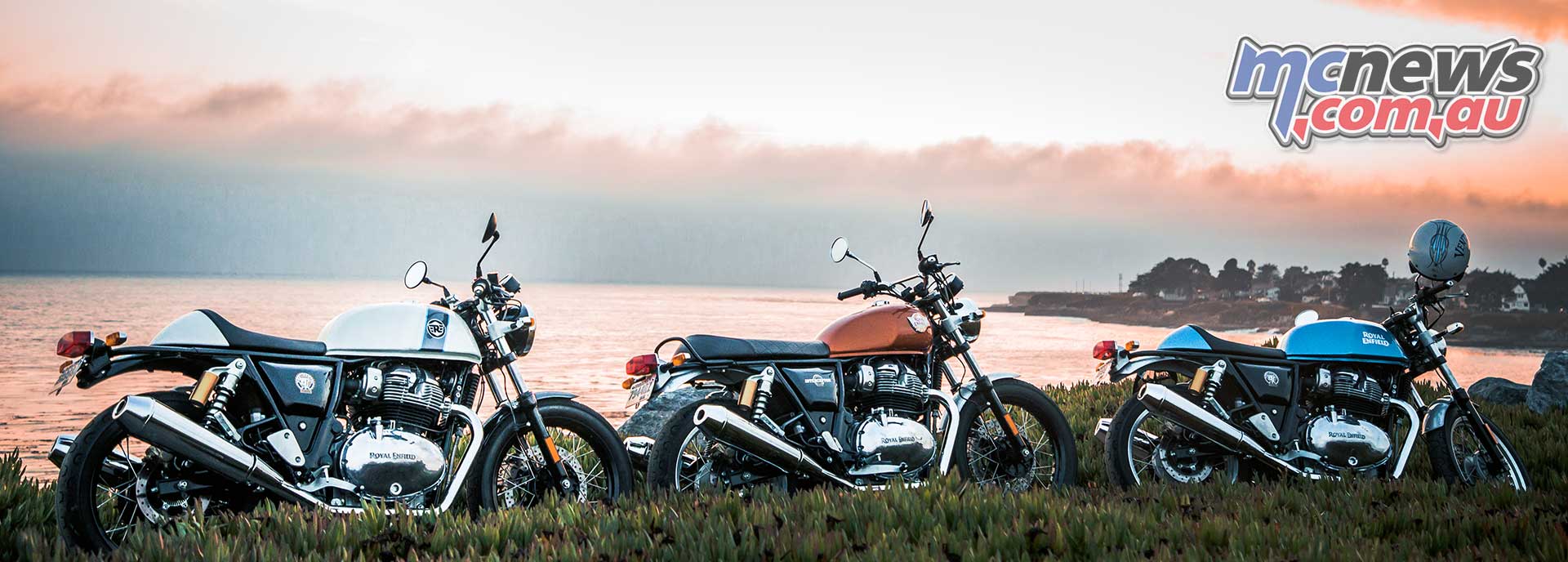
Royal Enfield. That name summons up various thoughts depending on how old you are, where you come from and of course your knowledge of motorcycling history.
Right now though history is not where we should focus when we talk Royal Enfield. The Indian brand is undergoing a thorough modernisation program that aims to shift its perception as somewhat of an antiquated boutique brand for the eccentric, or simply an option for those a little or strapped for cash, in to a mainstream choice in mature markets such as ours.

Royal Enfield is striving to elevate their wares to new levels of quality and performance, but still aim to deliver motorcycles at a price point that makes them not only remarkably affordable for us in more affluent regions. While also remaining realistically attainable for the masses in emerging markets such as India, Brazil and Thailand.
To help them modernise and develop motorcycles with much broader global appeal Royal Enfield recruited dozens of staff from Triumph, and elsewhere in the motorcycle industry, to gain as much expertise as they can in order to bring a new range of much higher quality Royal Enfield motorcycles to market.

Last year they opened their Royal Enfield Technical Centre at the Bruntingthorpe Testing Ground. Here a 100+ strong international team of designers, engineers and test riders are permanent Royal Enfield staff all busy at work designing and refining new products.
The new Interceptor and Continental GT are the initial fruit borne of this new approach, but these are just the first of many new models on the way from the Indian brand as they position themselves to start making a real impact in mature markets.
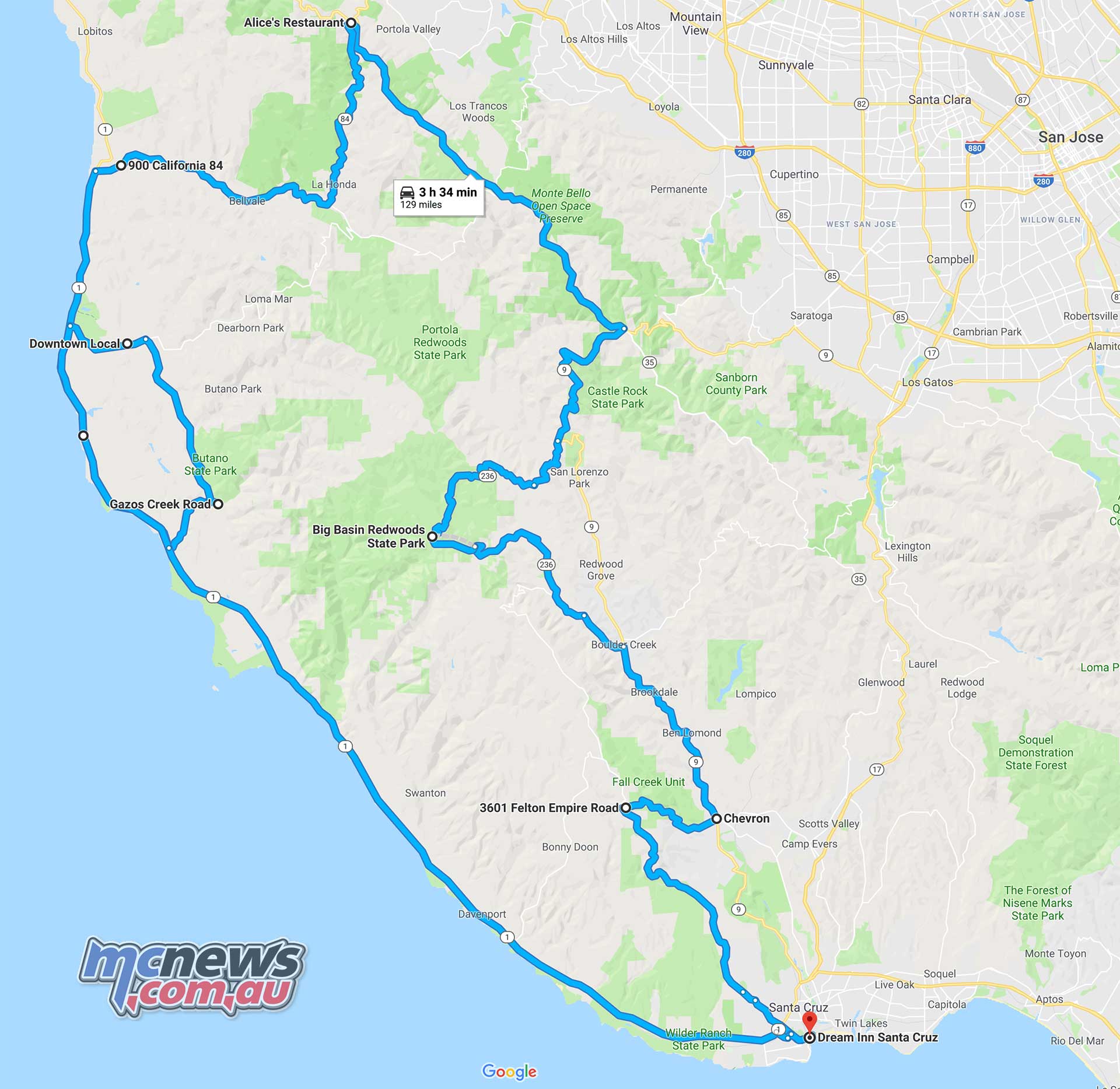
MCNews.com.au recently attended the worldwide media launch of this new twin-cylinder range to gauge just how well the next generation approach from Royal Enfield is playing out in the real world.
As I first spied the brace of new Royal Enfield models that filled the parking lot of the Santz Cruz Dream Inn, my eyes were drawn immediately to the handsome Continental GT.
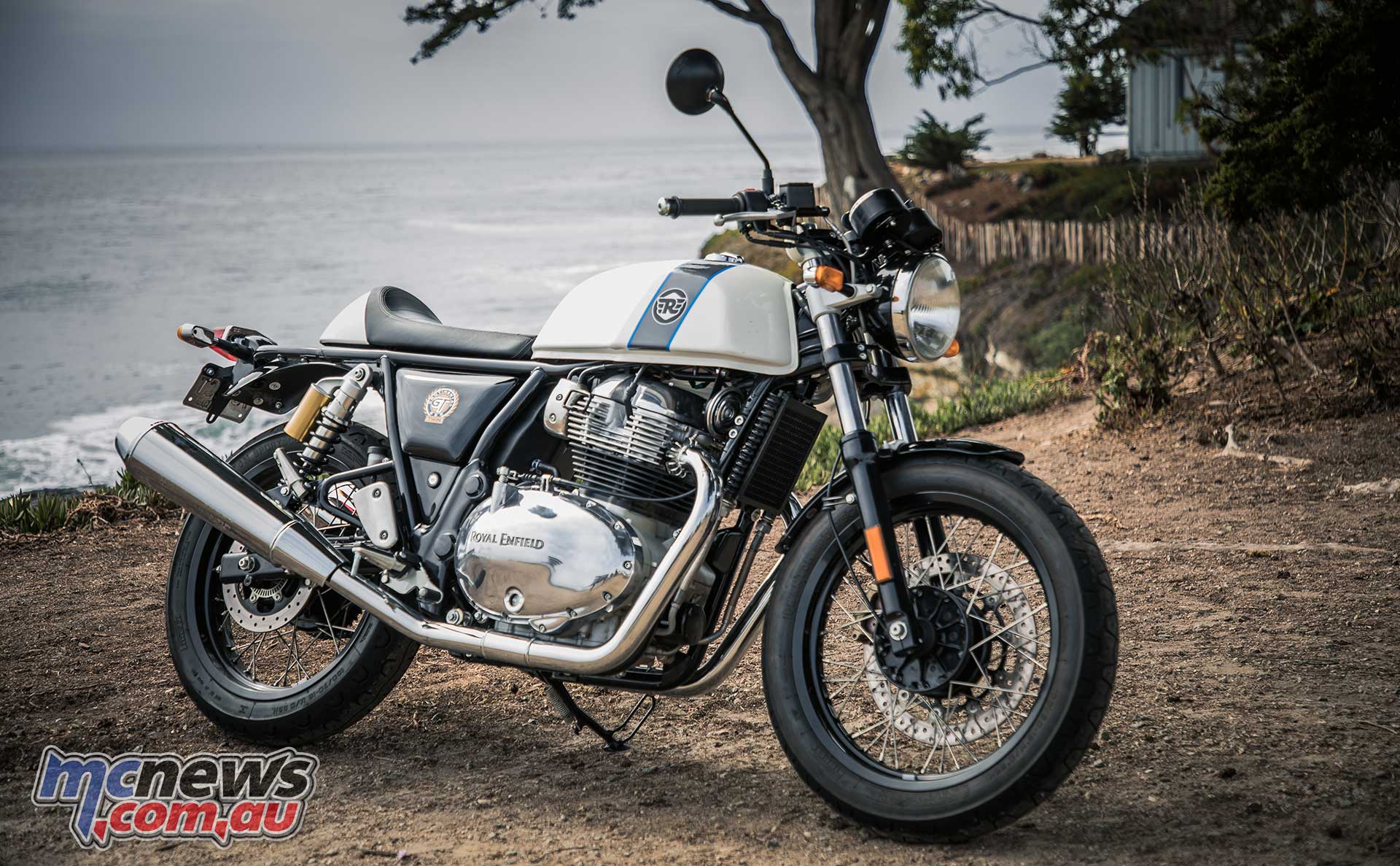
They all glistened in their various colours in the Californian sun against the glorious backdrop that is the famous century old Santa Cruz Wharf, the longest pier on America’s West Coast. The Continental GT in white was immediately my favourite.
The plain hue accentuated the clean lines of the machine to my eye, and I must admit to being taken aback a little with just how attractive these new machines were.

I liked the Interceptor also, it was tasteful and promised what looked like slightly more comfortable ergonomics, but the Continental GT had more brooding intent along with a little menace. Clearly the first impressions of these new machines were positive, and as I looked deeper they didn’t disappoint.
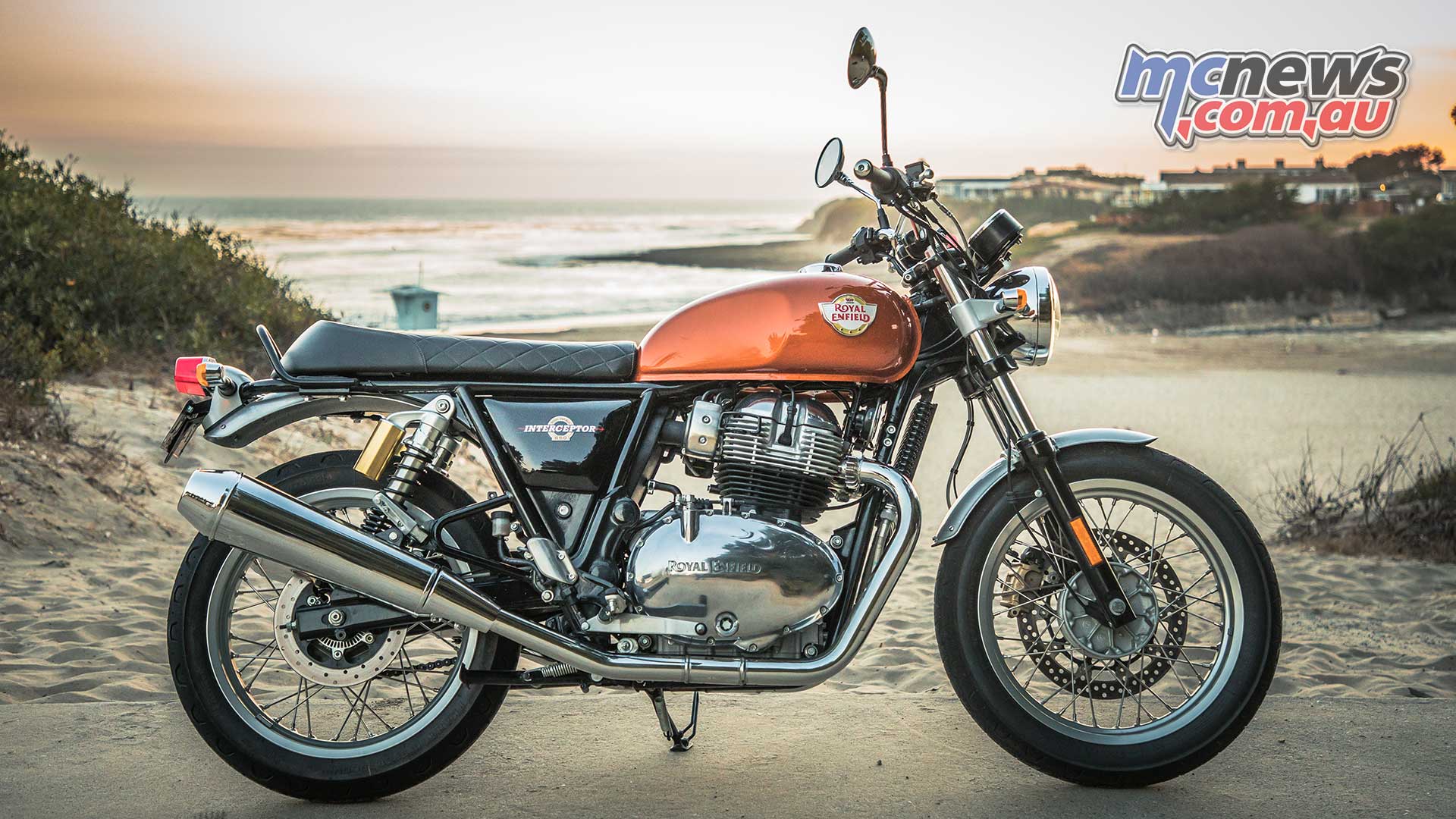
The paintwork and chrome looked brilliant, I would later learn these improved finishes are the product of improved production techniques now being used by Royal Enfield. I can’t of course attest to the longevity of both treatments in the long term, but I can say that on all the bikes I examined the paint, chrome, stainless steel and alloy surfaces all looked great.
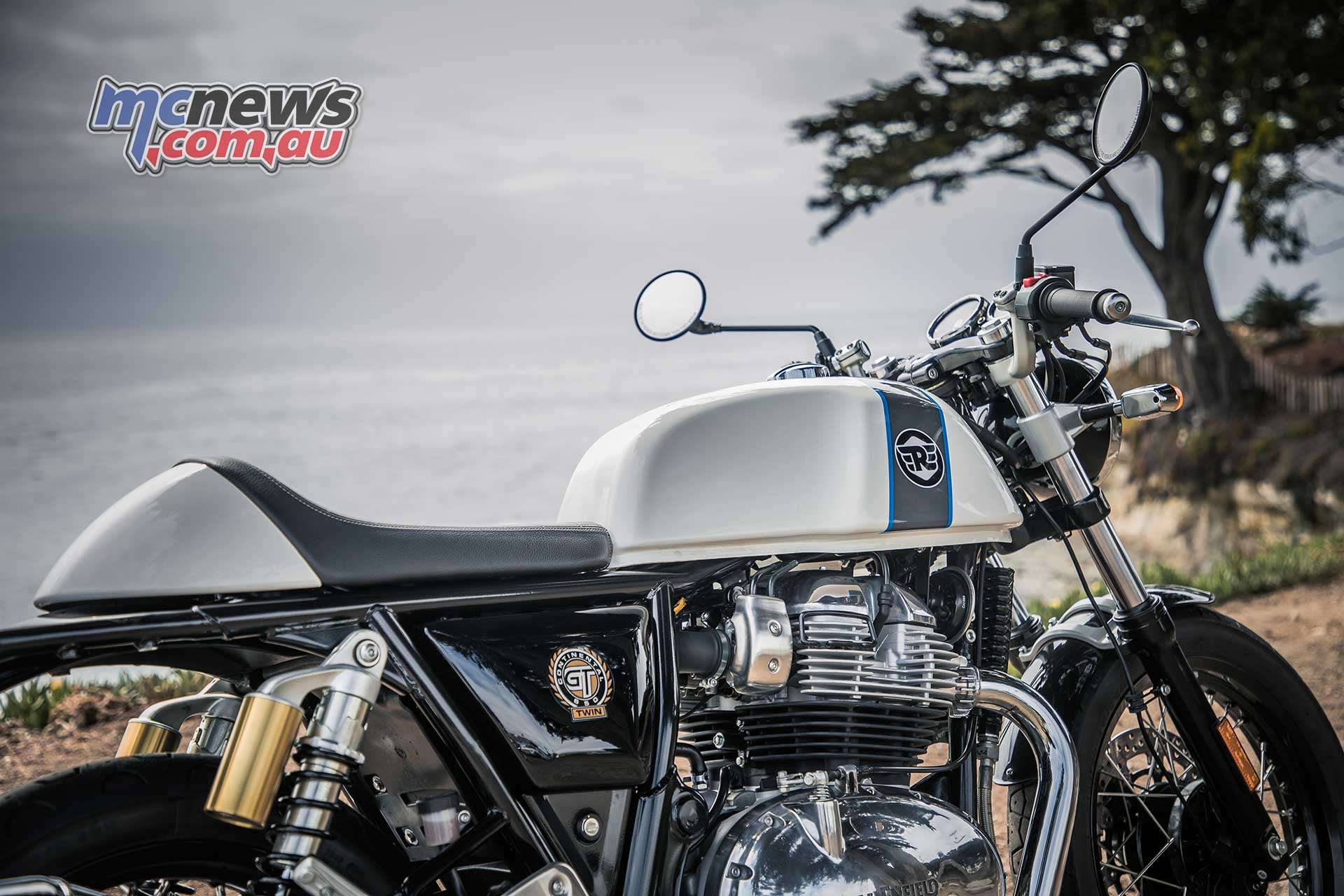
The bends of the 2-into-2 exhaust leading to the long upswept mufflers are a signature element of the styling and one that has been carried off beautifully. They sound bloody good too, but alas only to onlookers, as they exit too far behind the rider to be heard from the cockpit.
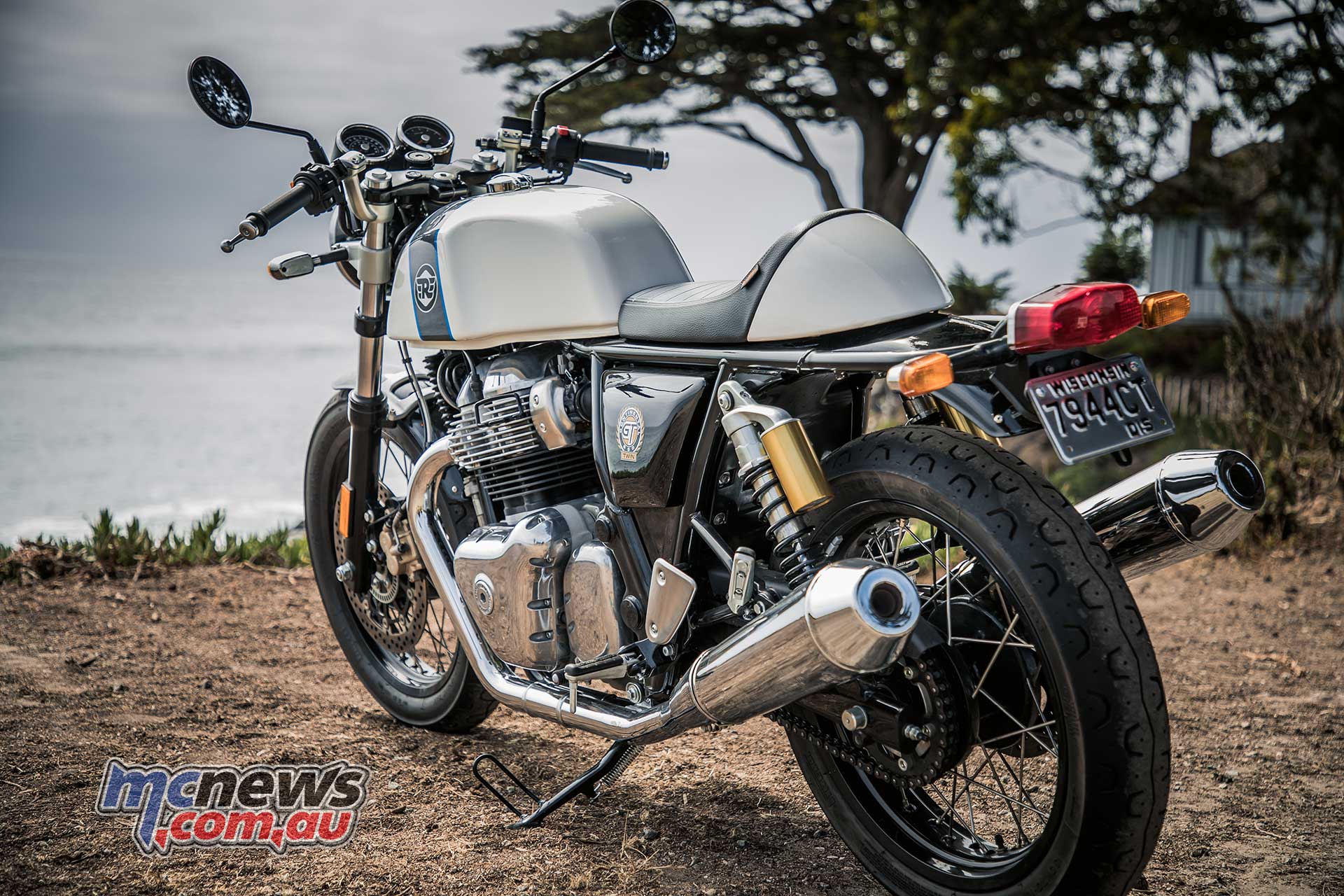
If you want to listen to the concert while riding you will need to tick the optional extra box for some freer flowing units. The rortier pipes also come with what feels like a modest improvement in top end surge in the final third of the conventional 9000 rpm tachometer.
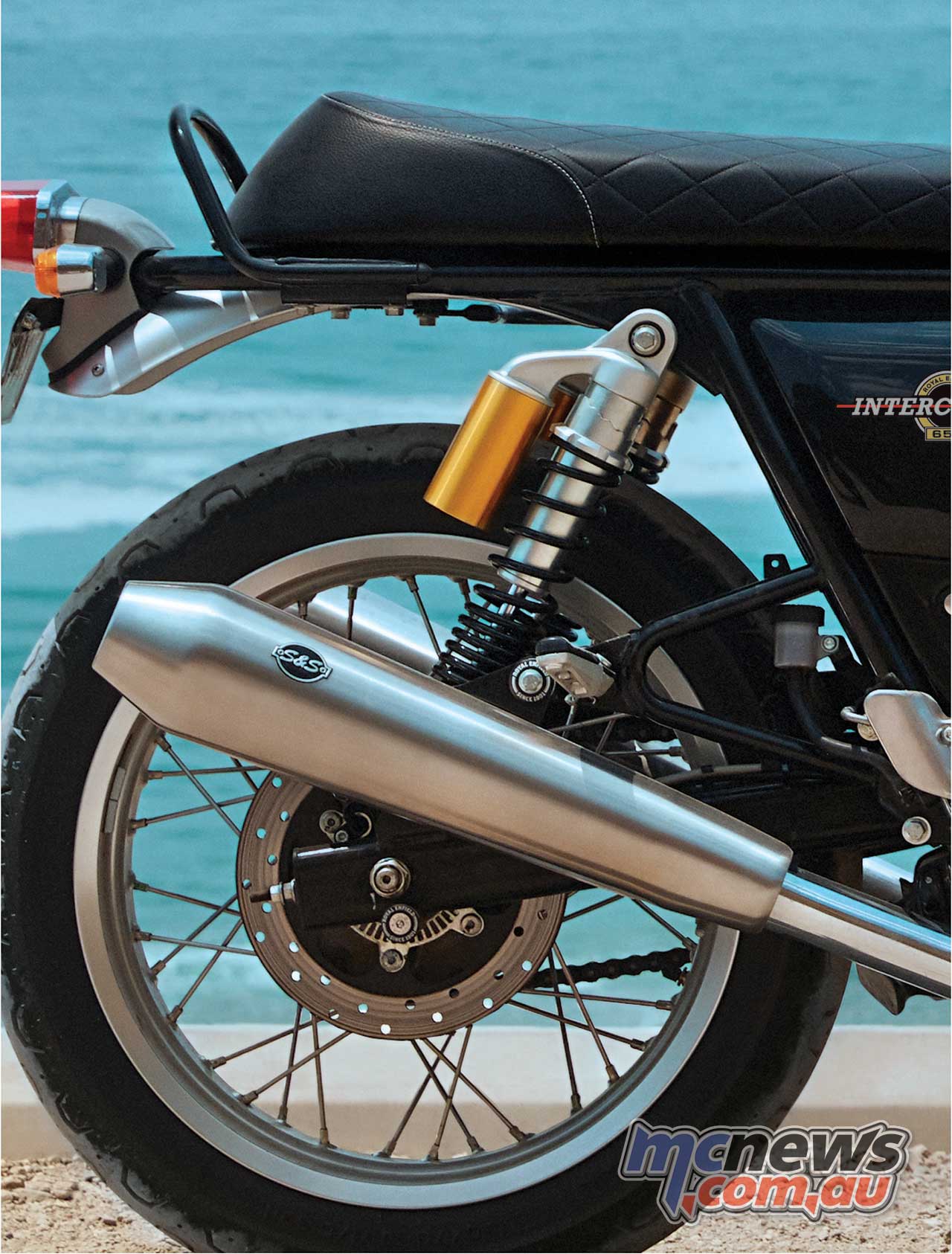
Despite looking quite individual, the two models share almost all the same parts. Primarily, it is only the seat, tank and bars that are markedly different, and along with peg position it is these items that also differentiate the ergonomics of the machines.
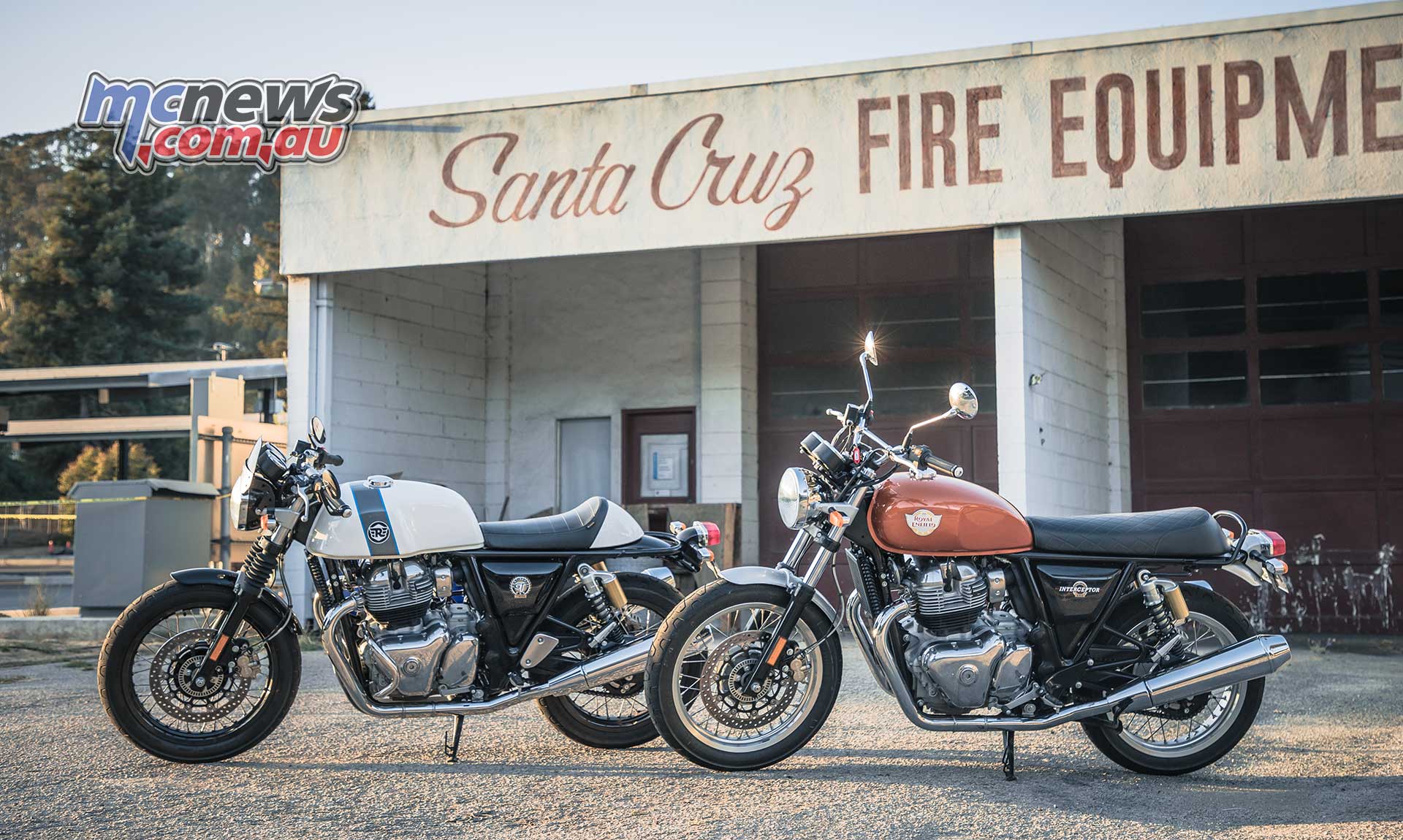
The GT has a little more ground clearance and a slightly stiffer base setting on the rear spring, but otherwise it is identical to the Interceptor. Ground clearance is generous on both machines and you are going full pelt with very little in reserve before you touch anything down.
In the corners these machines really do shine. The designers, or ‘felt-tip fairies’ as the engineers and test riders refer to them, decided from the outset that to achieve the stance they wanted the bikes had to roll on 18” rims at both ends. Dynamically, this posed numerous challenges that had to be overcome in order to obtain a sweet steering and handling motorcycle.
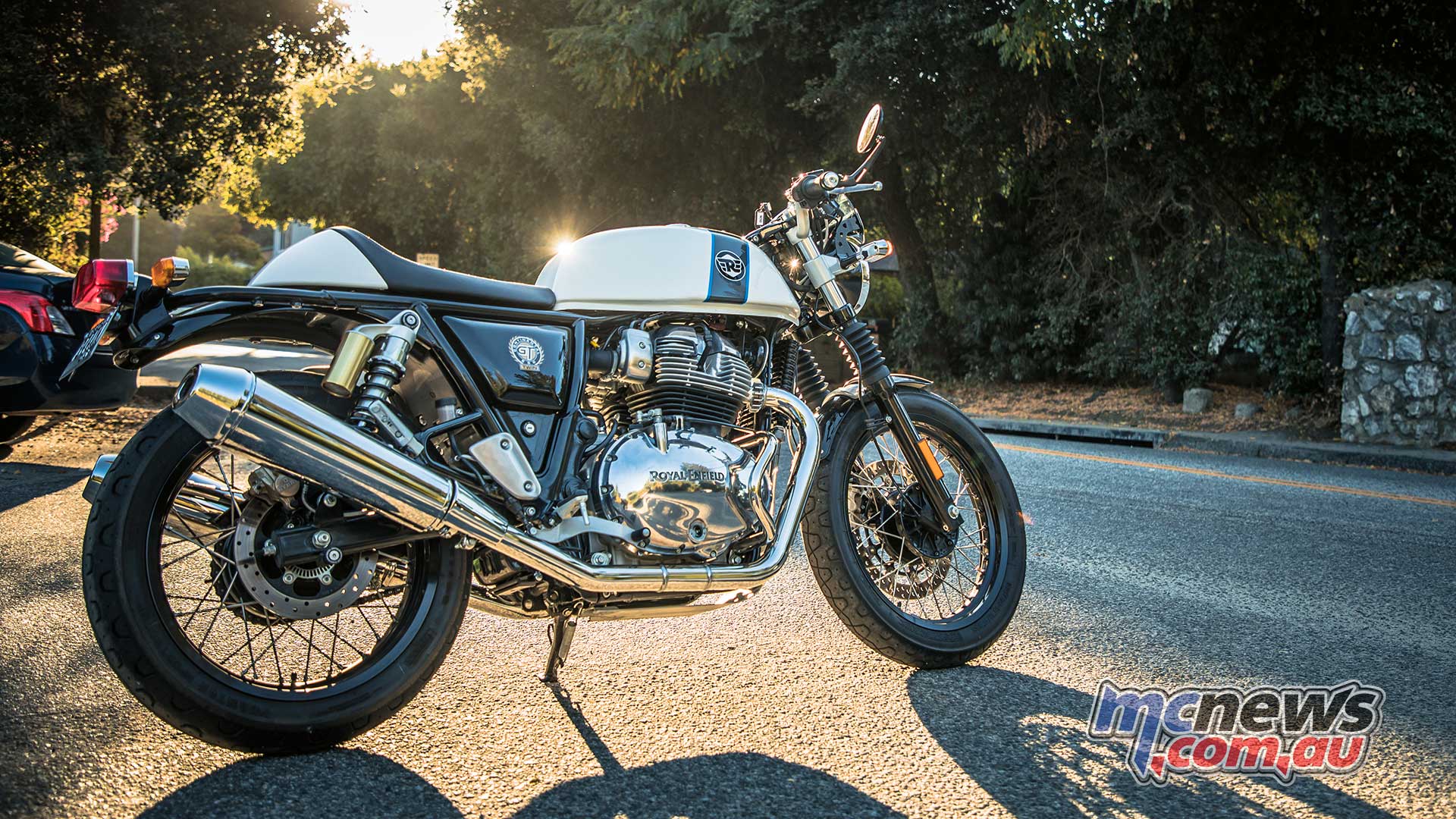
The development team left no stone unturned and has delivered a chassis that is remarkably competent and exhibits no bad traits that I could ascertain. They steer sweetly, hold a line well and do not run wide or stand up under brakes.
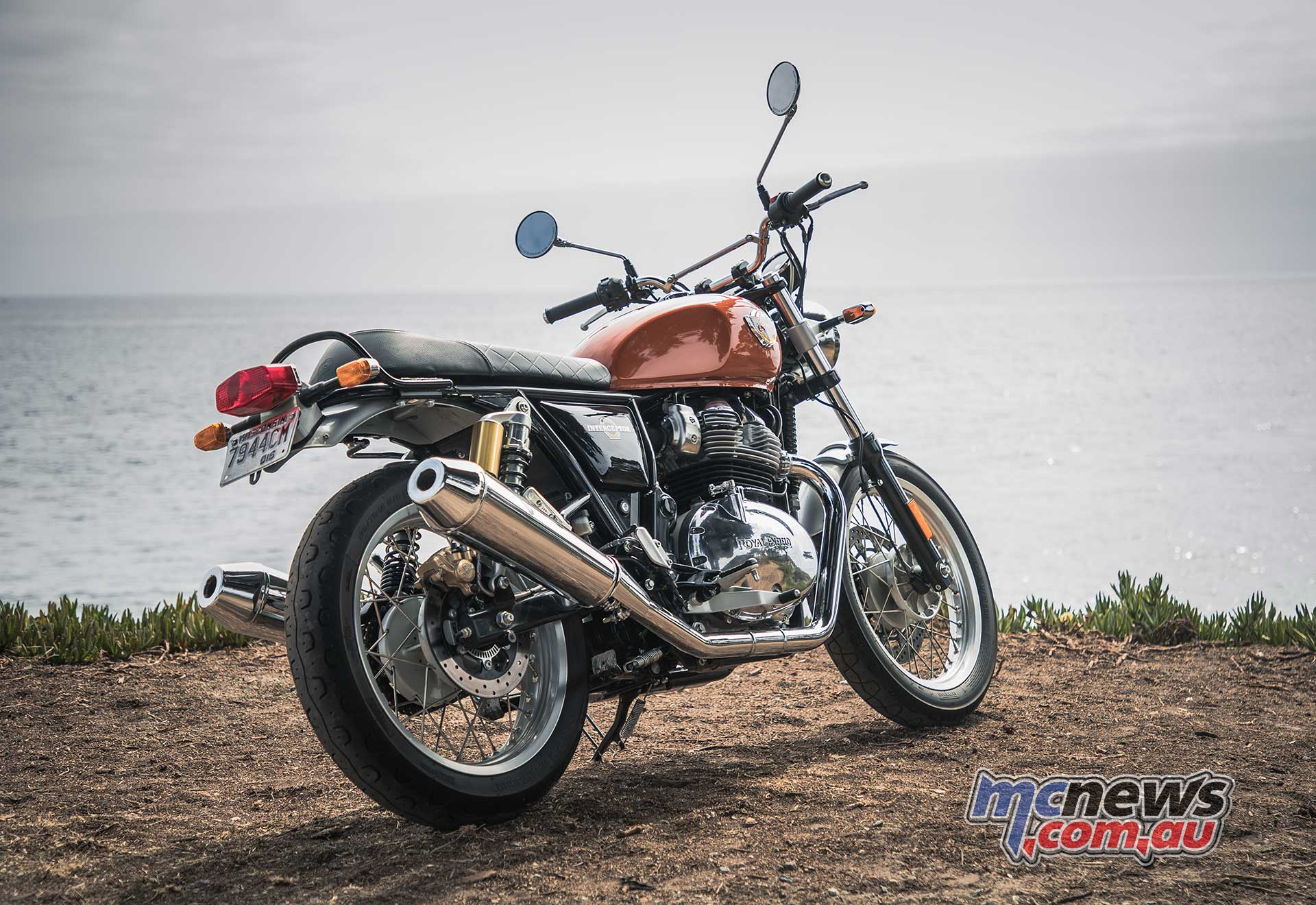
In fact, the dimensions and geometry of the tubular steel, double-cradle frame had been decided, and the production of tooling was well down the track when test riders found another breakthrough in dynamics while using yet another variation on their Harris Performance produced test frames. The fact that they then managed to convince Royal Enfield management to junk that purportedly seven-figure investment already made in tooling, in order to bring those improvements to the first production run, is a testament to how committed the company is to getting these new twins right.
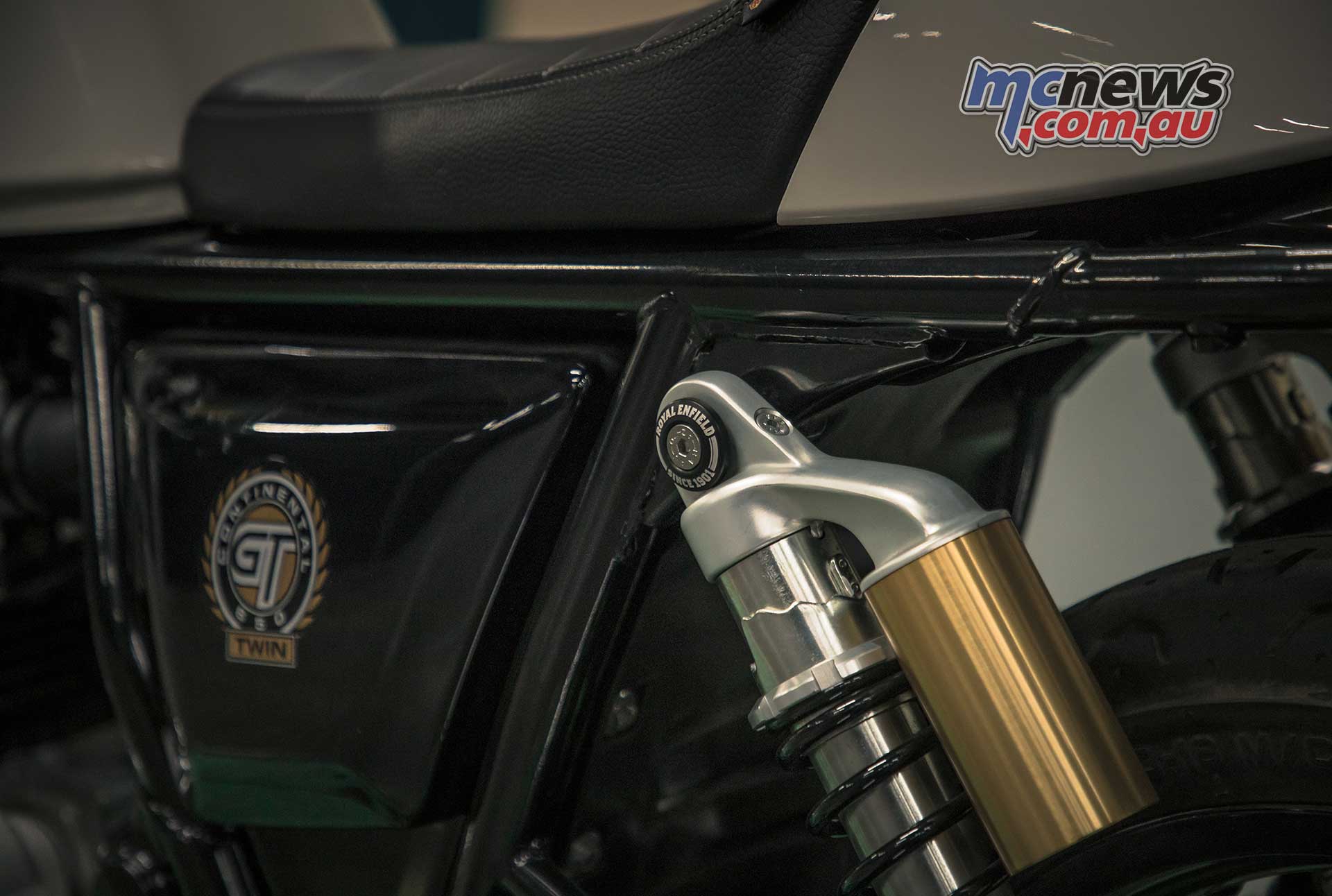
The suspension is basic but actually works pretty well. 41mm conventional forks offer no adjustment and have 110mm of travel while the piggyback rear shocks offer 88mm of travel. They are identical across both machines, save for the five-stage adjustable rear preload on the Continental GT having a base #1 setting equivalent to what would already be three-clicks on the Interceptor, however the spring rates remain the same.
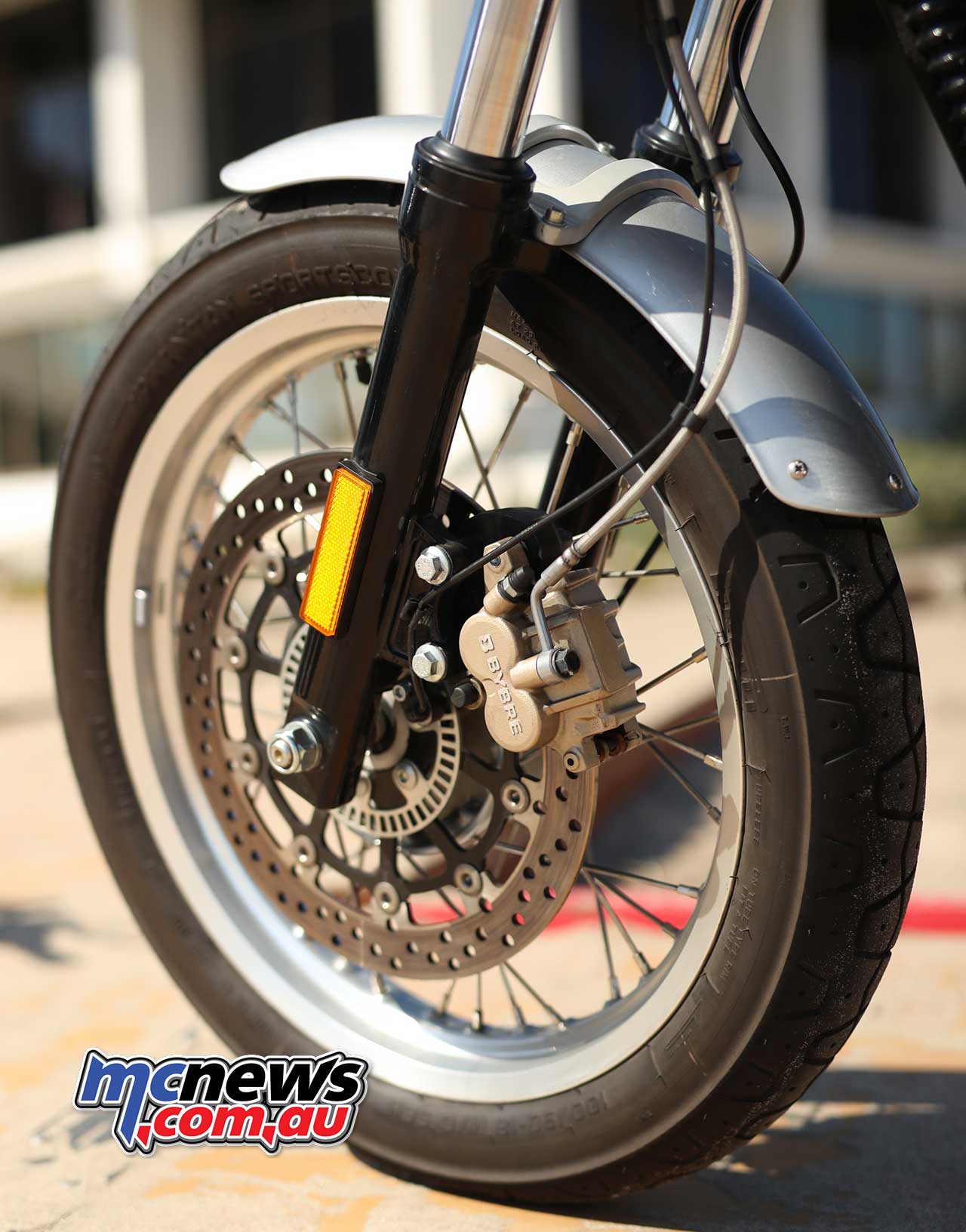
I never copped any significant smacks in the arse or the goolies during my 400 kilometres onboard the machines and remained pretty comfortable throughout. The seats feel quite thinly padded and at the end of each day I was starting to move around on them a little, but overall they do the job reasonably well.
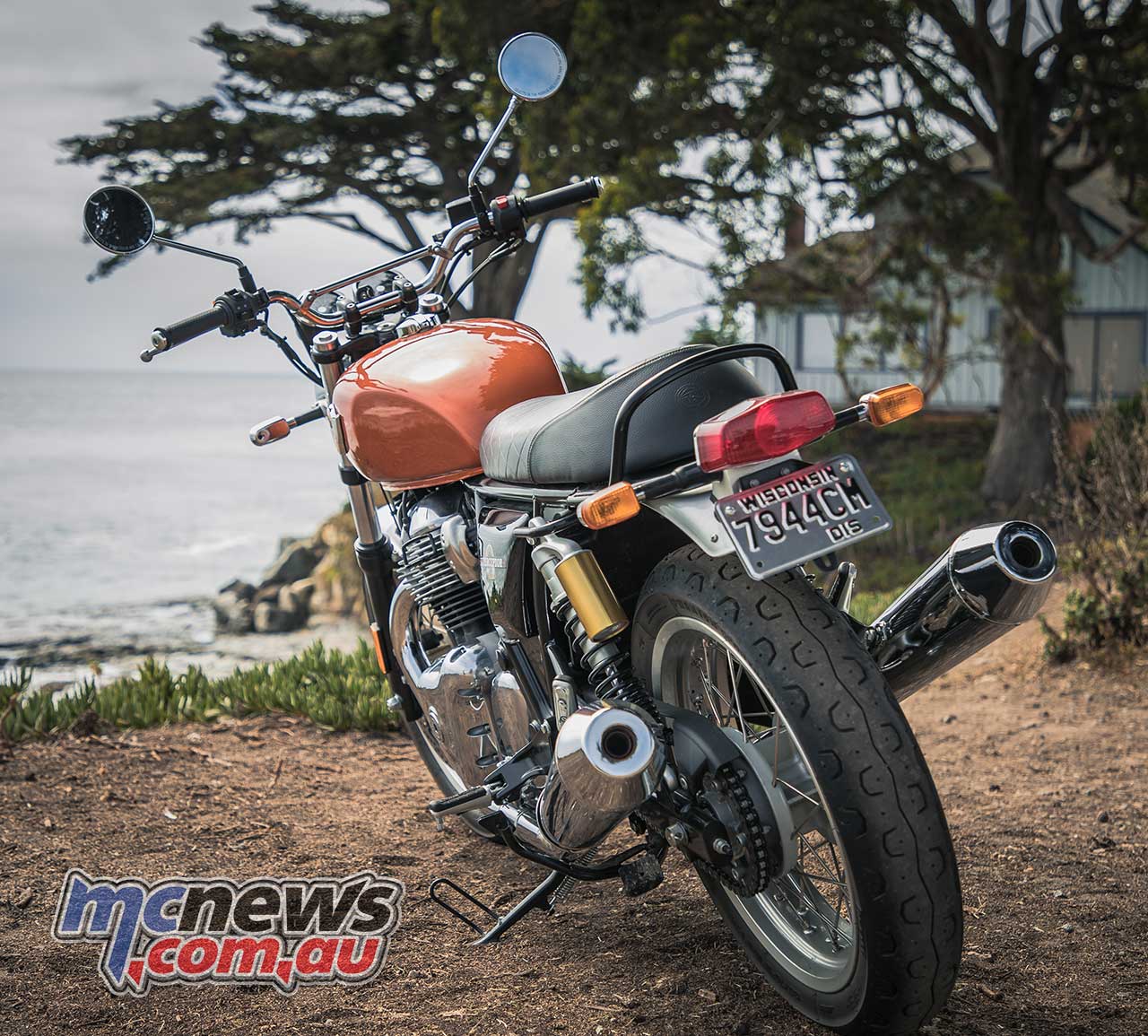
Seat height on the Continental GT is 790 mm while the Interceptor perch is marginally higher but still duck friendly at 804 mm. Both bikes roll on a 1400 mm wheelbase with 24-degrees of rake.
The tyres are of a tubeless specification but the 36-spoke rims they are fitted to are not. However, the extra carcass strength afforded by the tubeless spec’ rubber helps to add stability and poise to the chassis as a whole.

The Pirelli Phantom Sportcomp rubber also looks pukka and offer plenty of grip despite their unusually slim sizes, 100/90-18 at the front and 130/70-18 at the rear. These were jointly developed between Royal Enfield and Pirelli specifically for these machines and the compound was actually tweaked further after testers thought more improvements could be made while doing endless test runs in California ahead of the world launch.
It would have been nice, however, if the rims were able to be used without a tube as punctures on tubed tyres are not as simply fixed on the run via a plug and gas cartridge. That said, at least tubes should be easy to come by as 18-inch is the size widely used on almost all off-road enduro motorcycles. Thus any motorcycle shop in the back of Bum Fuck, Idaho, should be able to help you out if you get stranded.
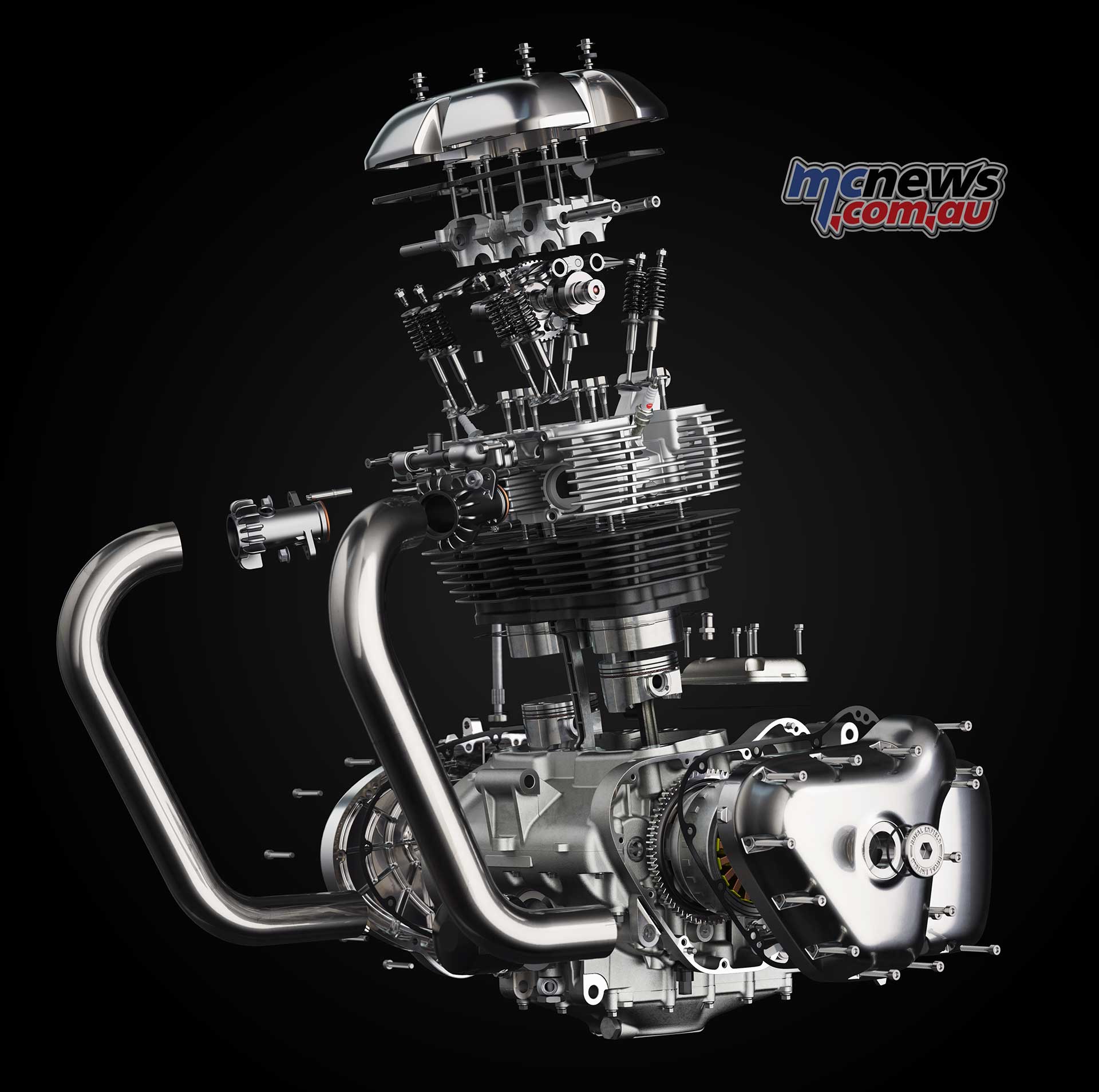
The 648cc engine is all-new and will no doubt also power a cavalcade of more new models to come from the Royal Enfield stable over the next couple of years. We are also likely to see a slightly up-sized unit at some stage.
Remarkably, for an air-cooled engine, Royal Enfield have not only met Euro4 emissions levels, but tell us that they will also easily meet Euro5. It does sport a reasonable size oil-cooler but of course no liquid-cooling also means more simplicity, no water pump, hoses or radiator. It was pretty warm during our time in California but the bikes did not seem to get hot and bothered at all and I can’t remember feeling any major levels of radiant heat making their way up to me in the cockpit.

A 270-degree crank was chosen for the same reasons that this crank phasing has almost become the default in modern parallel twins. It gives more of a v-twin feel while retaining the packaging and cost advantages that a parallel engine affords. I am not sure if I agree that was the right move, I quite like the feel of a 360-degree crank and they are now so rare that this could have been another welcome point of difference for Royal Enfield to capitalise on, after all that is the original song of the British twins.
Thumbing the starter from cold sees the twin idles a little over 1500 rpm before settling down to around 1200 rpm once warmed up. The feel and sound brings a smile to your dial.
A single overhead cam actuates the four valves on each of the 78 mm cylinders and the engine runs a remarkably low 9.5:1 compression ratio. Obviously that is to cater for low octane fuel found in some regions, but it certainly doesn’t help the engine muster any sort of immediate urgency under throttle.
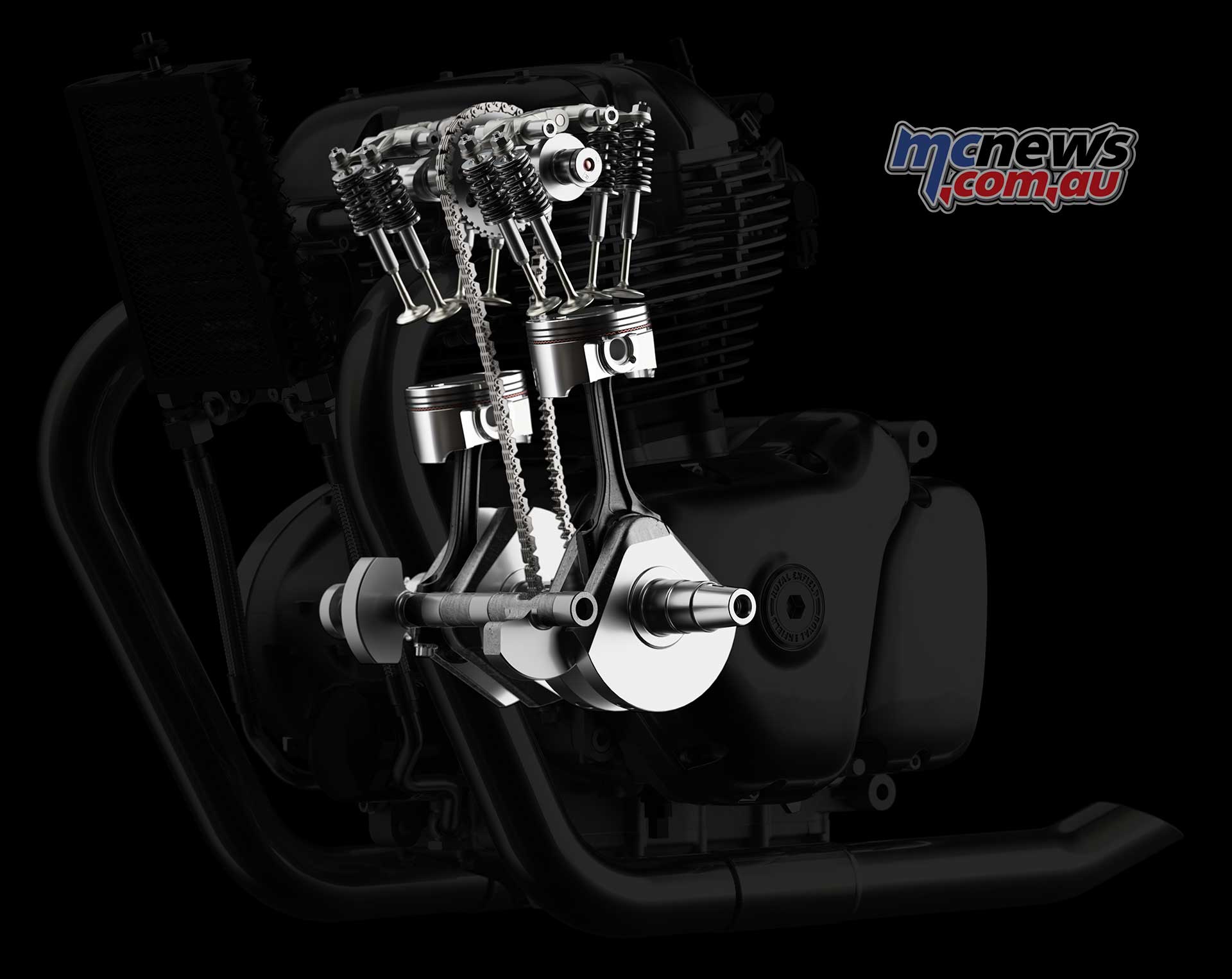
Throttle response is pretty much faultless though, from closed to open the response is smooth at virtually every rpm. I don’t think you could even purposefully be ham-fisted enough to elicit any sort of abrupt response. This is a boon for new riders, and a credit to the team responsible for tuning the Bosch engine management system, but I would like to feel a little more instantaneous shove when I hit the throttle, and think this would add a little more to the riding experience.
Of course, a learner legal 47 hp is never going to rip your arms off but still I would prefer a little more urgency when hitting the throttle on the exit of a turn, and feel this could have easily been achieved.
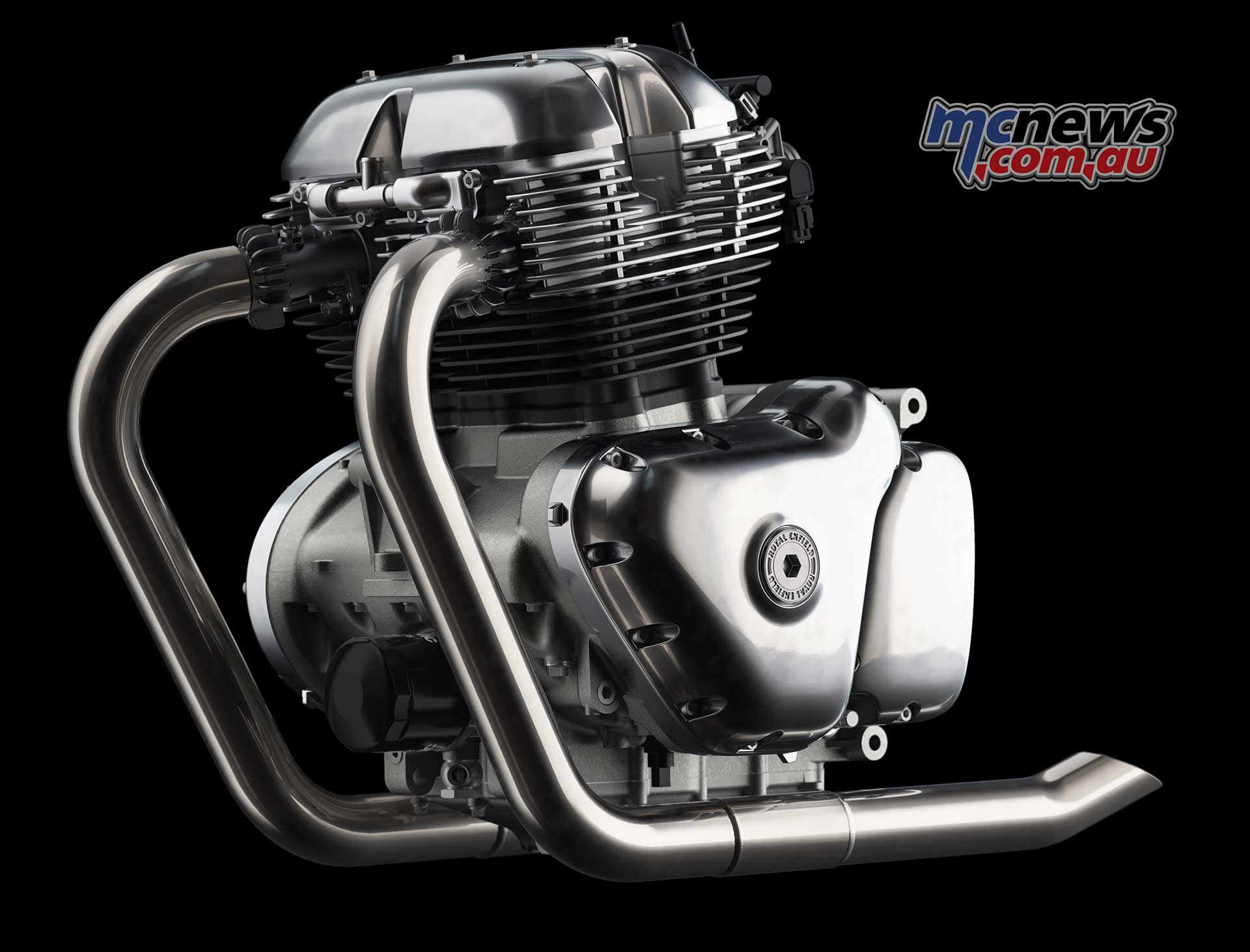
Maximum power is reached at 7250 rpm whilst torque peaks 2000 rpm earlier at 52 Nm. Royal Enfield claim that 80 per cent of that twist is available right down to 2500 rpm. That sounds about right to me as there are certainly no real peaks or troughs to speak of throughout the rev range. It is virtually impossible to stall and a generous 37.5-degrees of steering lock makes tight manoeuvring a doddle.
Cruising at 130 km/h sees you at that 5250 rpm torque peak and proves pleasant enough with no real vibrations to speak of. If you are extraordinarily patient you can see as high as 185 km/h on the conventional speedometer as you eventually brush the rev-limiter in sixth gear just over 8000 rpm. The box itself is smooth and sweet while the clutch is of the slip-assist type and proved light at the lever.
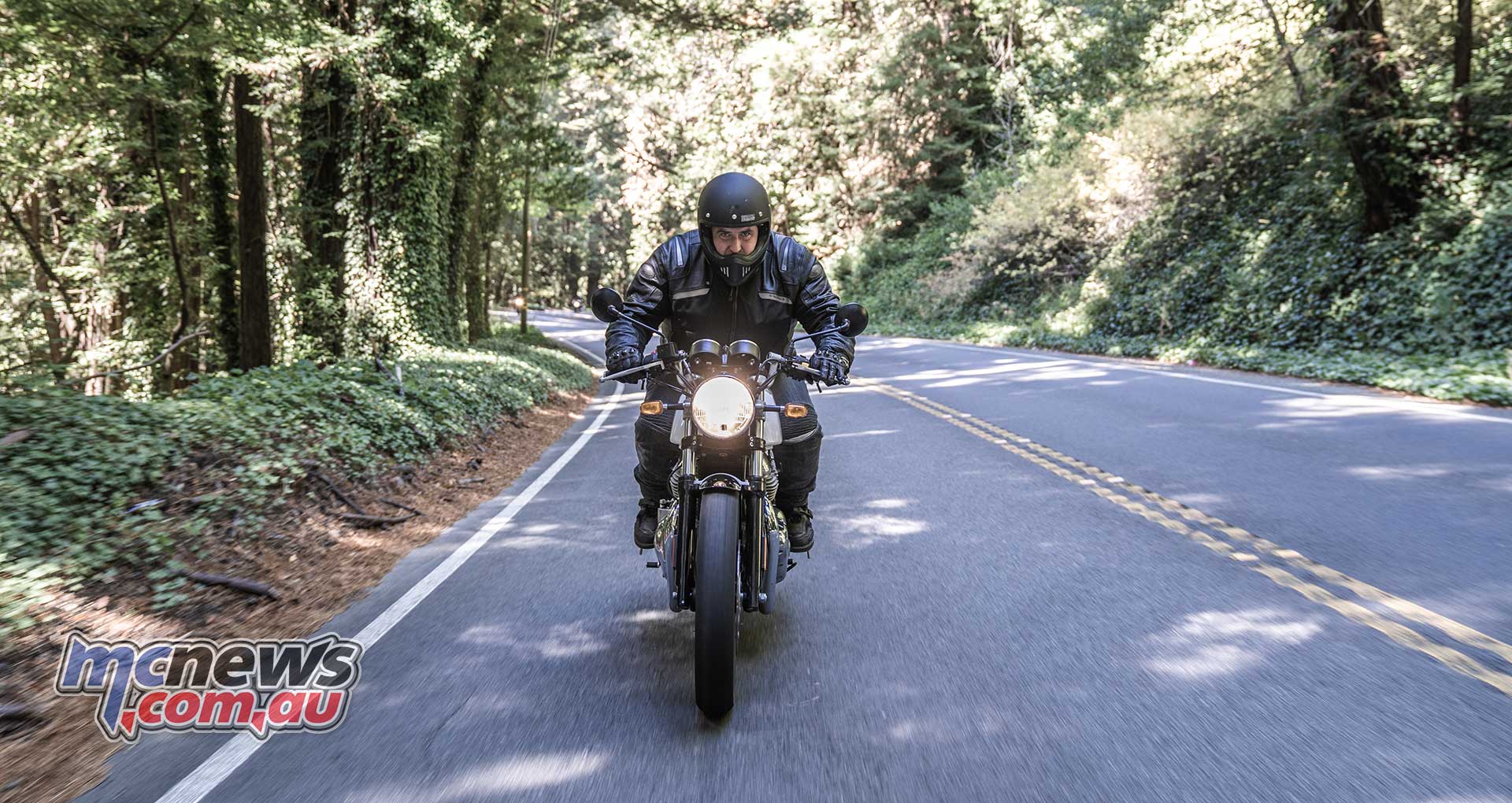
I accidentally tested the slipper function a couple of times. The first machine I rode dropped out of gear a couple of time as I whacked the pair of 34 mm throttle bodies open while still carrying a decent amount of lean on corner exit. This was no fault of the gearbox, but due to the shifter not being adjusted for my size tens correctly, which in turn had prevented me from completing the previous shift properly. Once the shifter was adjusted to a more suitable height it never happened again. That slipper clutch did save my arse though.
Braking performance actually proved quite good considering there is only a single disc front, albeit a large 320 mm item clamped by a twin-piston ByBre caliper. The ABS control unit is a contemporary Bosch dual-channel item quite minimalist in size.
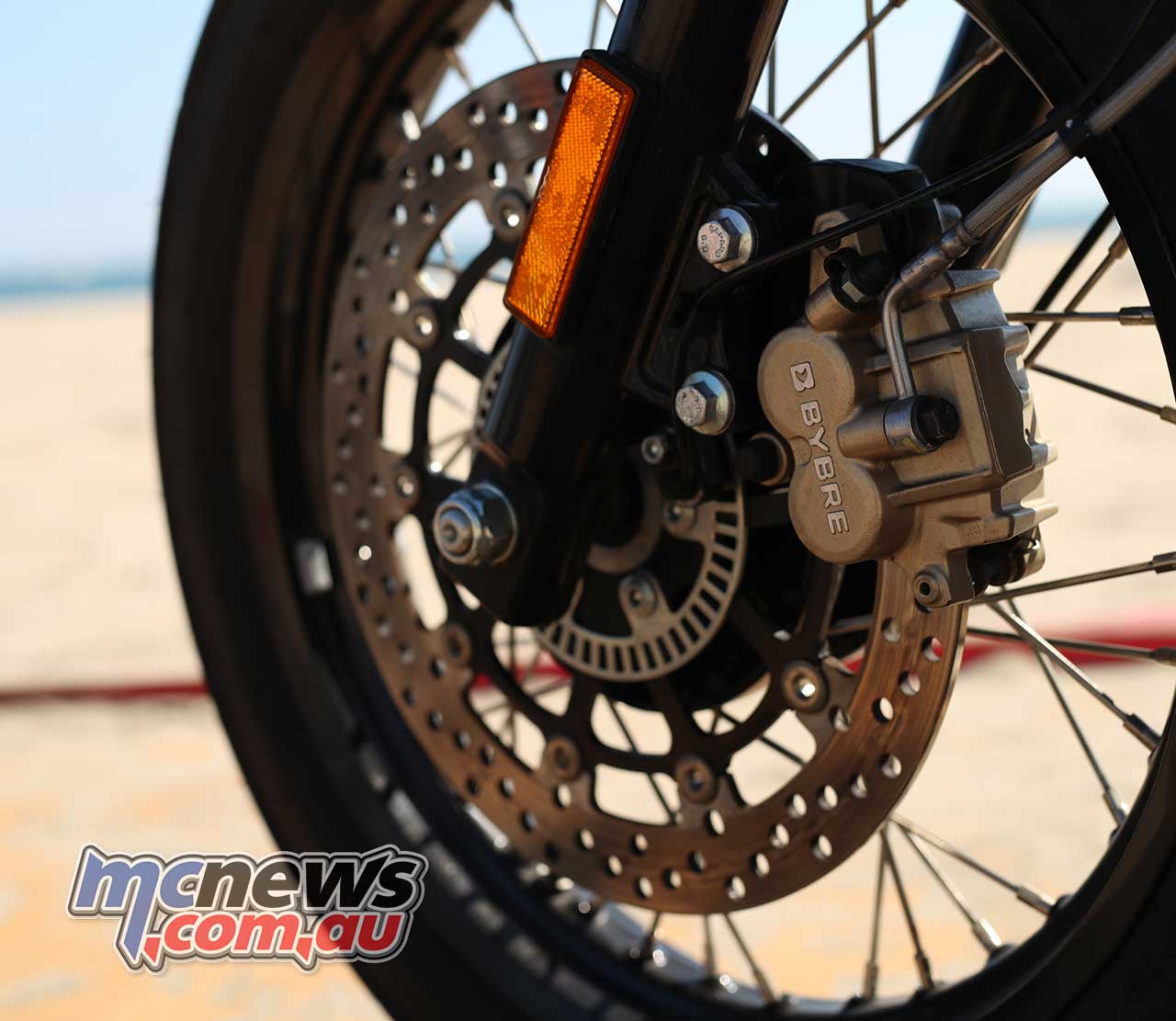
The mirrors work well enough and while the switchgear has a slightly tacky look it proved functional enough. In another cost saving measure the lights are conventional globes and not LED. A small LCD panel housed in the speedometer shows a fuel gauge along with the usual trip and odometer functions. By necessity of the crazy traffic from where it hails from the horn is very powerful by motorcycling standards. The Continental GT is crying out for some bar-end mirrors from the aftermarket catalogue.
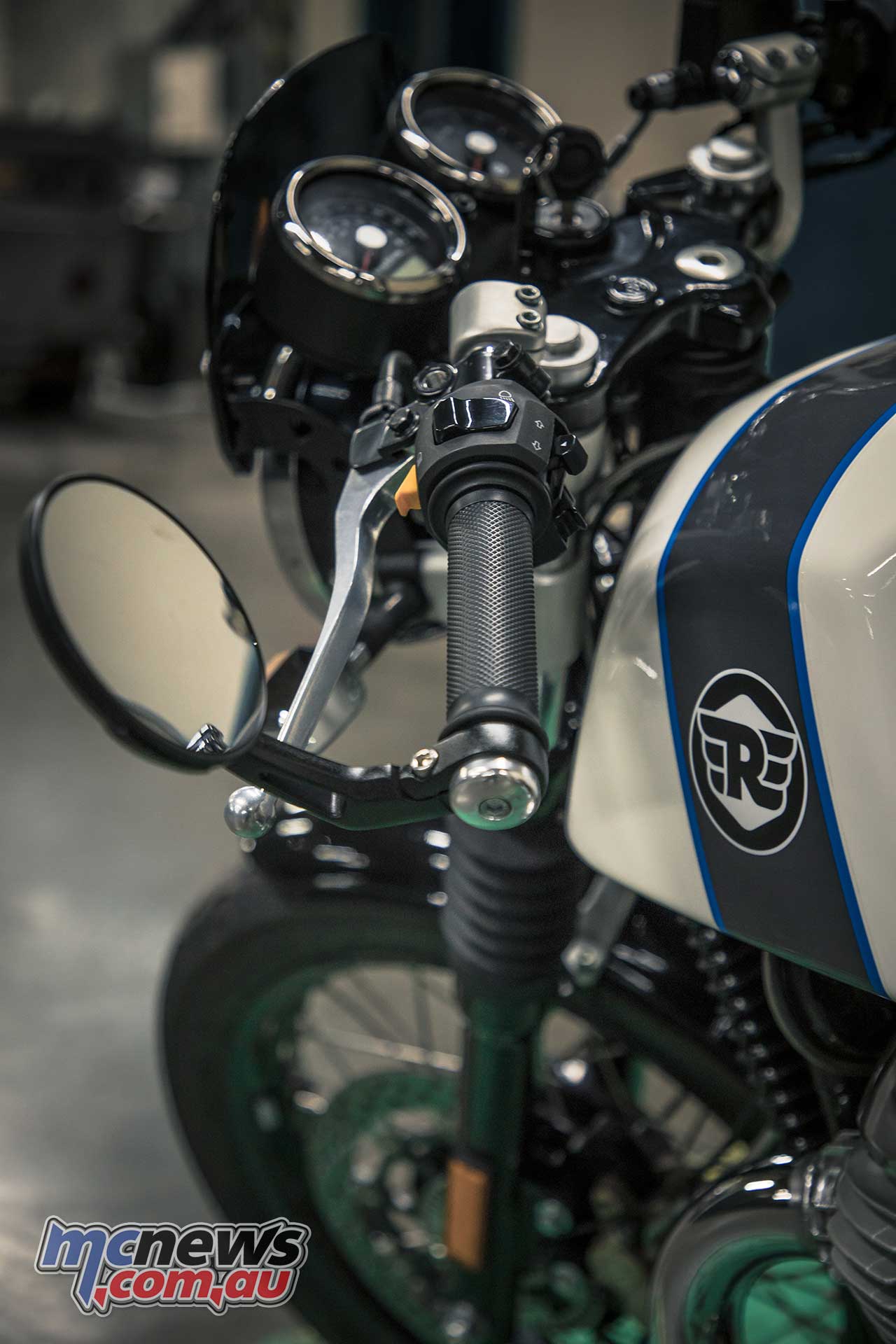
The look of the Continental GT had me immediately favouring it over the slightly more upright and little more staid looking Interceptor, however, for day to day commuting and possibly overall riding enjoyment it is perhaps the Interceptor that gets the nod. At 13.7-litres the Interceptor also scores a slightly larger tank than the more sculpted 12.5-litre tank fitted to the GT.
I can’t help myself though, and still think it would be the Continental GT that would get my dough as I really am quite taken by its looks. Then I would be looking at the louder exhaust, a set of high-compression pistons and some hotter cams to add the final pieces of the puzzle to produce some increased urgency to the throttle and a little more thrust out of the bends. But then with more power of course I would then need to tweak the suspension…
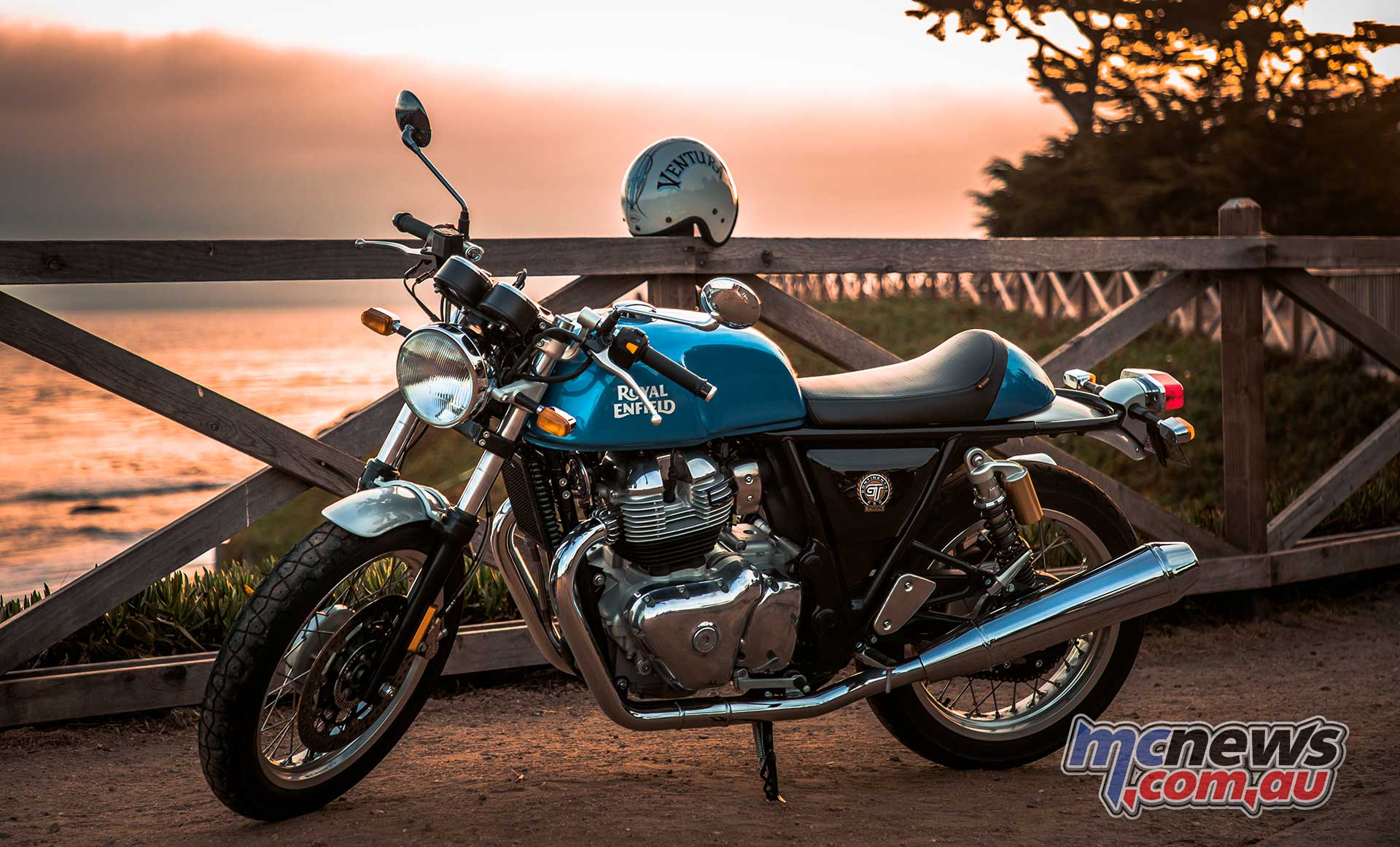
As they rock out of the box there is little to complain about. Overall, in my opinion, they are a much better ride in every scenario than, for example, Harley’s Street 500. And dynamically, it is perhaps almost as cohesive as the just superseded Triumph Street Twin model.
As I said in my initial thoughts published on MCNews.com.au immediately after the launch, I would not hesitate in recommending one of these to a new rider in Australia. Or an experienced rider just after a really affordable fun bike, and who doesn’t find a 47hp motorcycle beneath them. That’s something I would have never said of their previous models, but these new twins have broken the mould and most certainly have elevated the Royal Enfield to a new level of engineering competence.
Those of you that have followed my reviews for a long time, know that I am rarely so glowing and overwhelmingly positive about any bike, that’s generally not really the way I roll. You may have also noticed that I use the world ‘surprised’ quite a lot here, even though I went to great pains to try and not be too repetitive. But Royal Enfield really do need to be congratulated on taking this massive step forward. The real test of course will come out in the field, to see how well that lovely finish holds over the long term, and how well the mechanicals hold up as the kilometres are racked up. Early indications are positive in this regard but only time will tell.
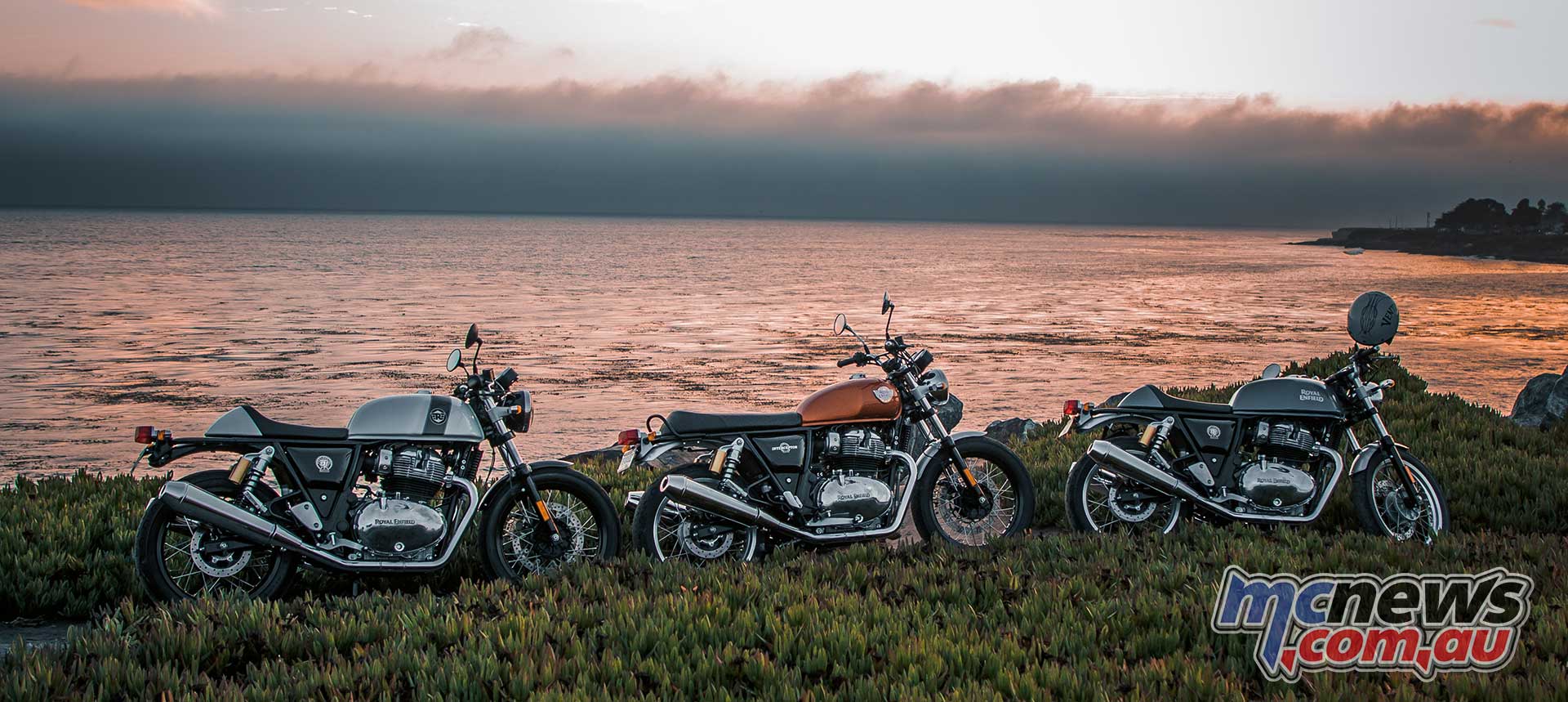
Australian pricing is yet to be confirmed but early indications are that the range will start around $10,000. Cost of ownership is also looking attractive with 10,000km service intervals while a market leading three-year warranty adds considerable peace of mind. Hopefully the dealership back-up and after sales support also proves positive.
Australian Pricing Announced (Link)
These new twins are a successful marriage of Royal Enfield’s basic roots of mechanical simplicity, but with just enough modern technology to ensure that the ride is fun, but without the fuss.
I look forward to what’s coming next from Royal Enfield. I am not sure what that will be, but I am damn sure there is going to be a lot more to look forward to from this company than we have ever anticipated before. And I find that pretty exciting.
While they have nearly gone out of business at low points in their history, Royal Enfield have always been producing motorcycles since the brand was first born in 1901. Thus Royal Enfield are the world’s oldest motorcycle manufacturer to be in continuous production. I think perhaps the best chapters in Royal Enfield’s long history are still to be written.
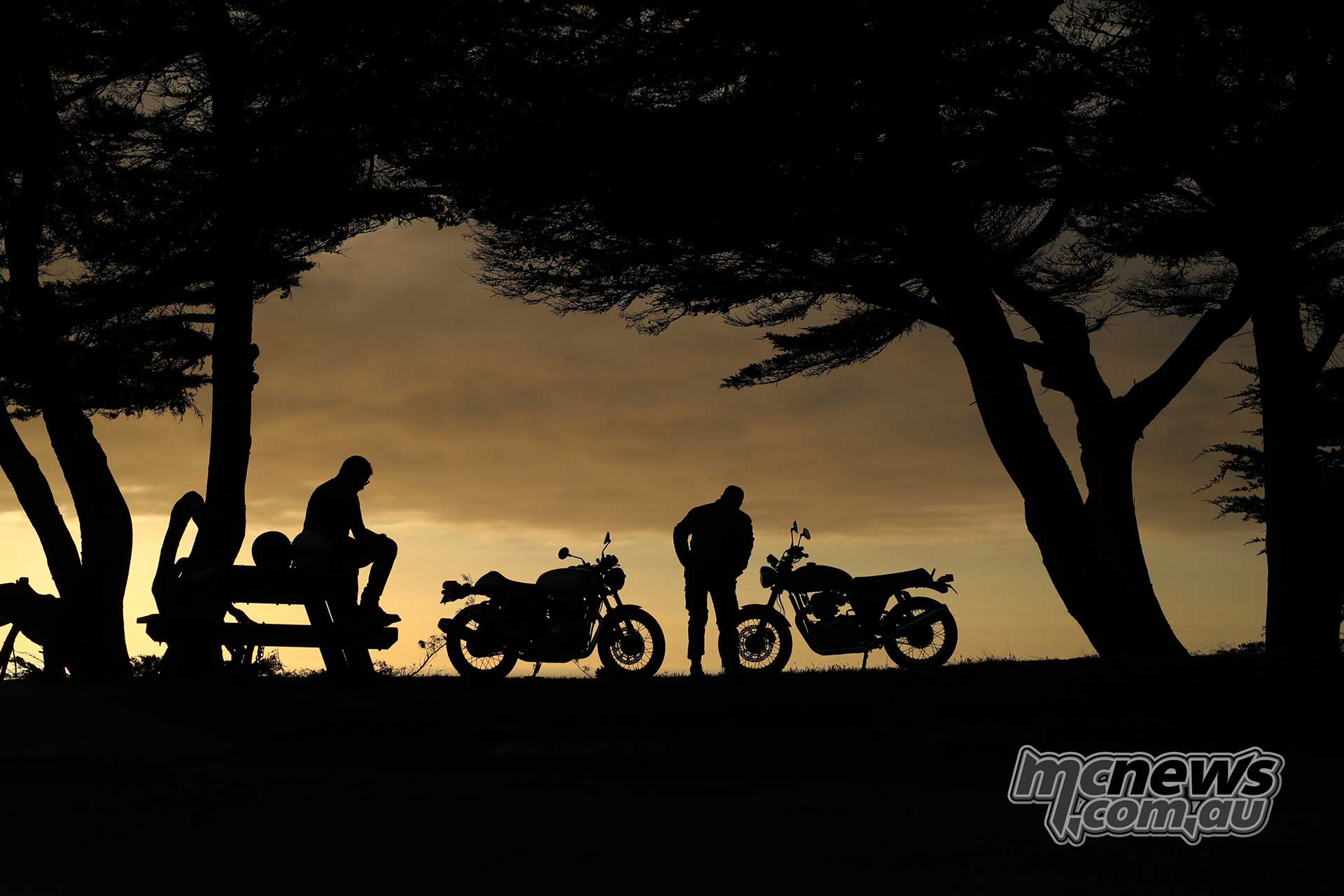
| SPECIFICATIONS | |
| INTERCEPTOR |
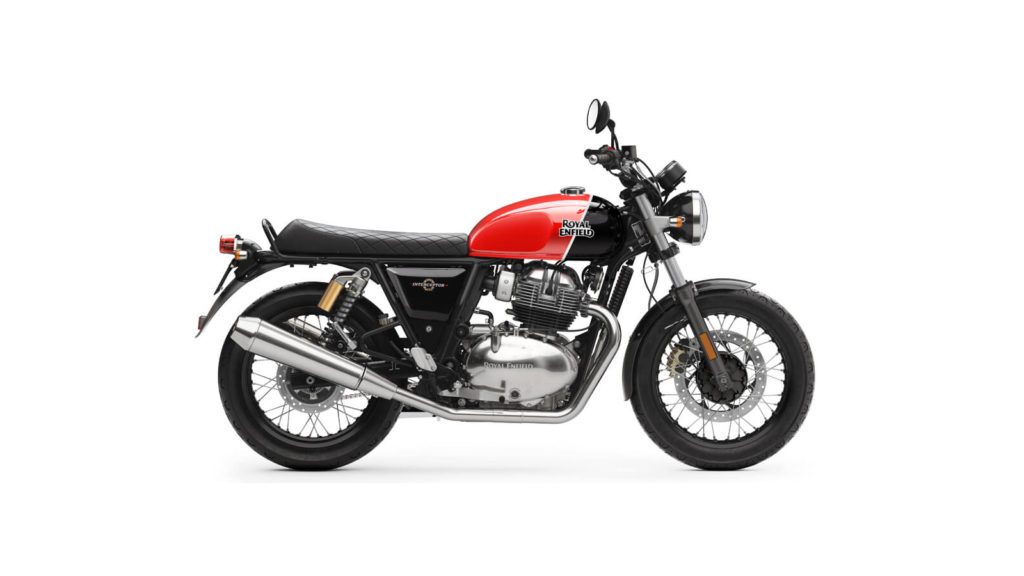
| ENGINE | |
| Type | 4 stroke, single overhead cam, air-oil cooled 648 cc parallel twin |
| Bore x Stroke | 78 mm x 67.8 mm |
| Compression Ratio | 9.5:1 |
| Maximum Power | 47 hp @ 7100 rpm |
| Maximum Torque | 52 Nm @ 4000 rpm |
| Ignition system | Digital spark ignition – TCI |
| Gearbox | 6 speed |
| Fuel management | Fuel injection |
| FRAME/CHASSIS | |
| Frame | Steel tubular, double cradle frame |
| Front suspension | 41 mm front fork, 110 mm travel |
| Rear suspension | Twin coil-over shocks, 88 mm travel |
| DIMENSIONS | |
| Rake | 24 degrees |
| Ground clearance | 174 mm |
| Length | 2122 mm |
| Width | 789 mm |
| Seat height | 804 mm |
| Height | 1165 mm |
| Kerb weight | 202 kg |
| Fuel capacity | 13.7 lts |
| BRAKES AND TYRES | |
| Front tyre | 100/90-18″ |
| Rear tyre | 130/70-18″ |
| Front brakes | 320 mm disc, ABS |
| Rear brakes | 240 mm disc, ABS |
| SPECIFICATIONS | |
| CONTINENTAL GT |
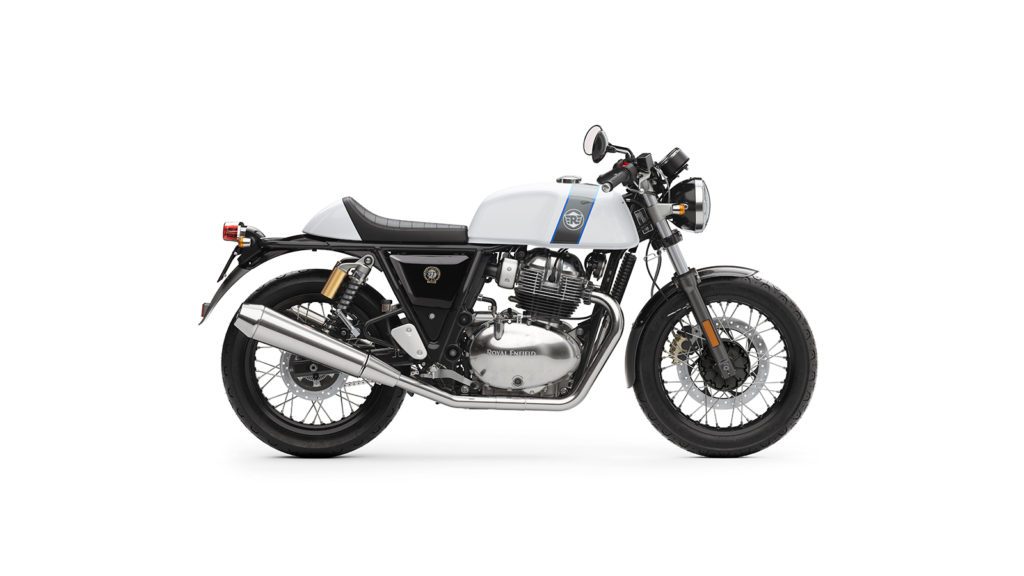
| ENGINE | |
| Type | 4 stroke, single overhead cam, air-oil cooled 648 cc parallel twin |
| Bore x Stroke | 78 mm x 67.8 mm |
| Compression Ratio | 9.5:1 |
| Maximum Power | 47 hp @ 7100 rpm |
| Maximum Torque | 52 Nm @ 4000 rpm |
| Ignition system | Digital spark ignition – TCI |
| Gearbox | 6 speed |
| Fuel management | Fuel injection |
| FRAME CHASSIS | |
| Type | Steel tubular, double cradle frame |
| Front suspension | 41 mm front fork, 110 mm travel |
| Rear suspension | Twin coil-over shocks, 88 mm travel |
| DIMENSIONS | |
| Rake | 24 degrees |
| Ground clearance | 174 mm |
| Length | 2122 mm |
| Width | 744 mm |
| Seat height | 790 mm Single 793 mm Dual |
| Height | 1024 mm |
| Kerb weight | 198 kg |
| Fuel capacity | 12.5 lts |
| BRAKES AND TYRES | |
| Front tyre | 100/90-18″ |
| Rear tyre | 130/70-18″ |
| Front brakes | 320 mm disc, ABS |
| Rear brakes | 240 mm disc, ABS |
| SPECIFICATIONS | |
| INTERCEPTOR |

| ENGINE | |
| Type | 4 stroke, single overhead cam, air-oil cooled 648 cc parallel twin |
| Bore x Stroke | 78 mm x 67.8 mm |
| Compression Ratio | 9.5:1 |
| Maximum Power | 47 hp @ 7100 rpm |
| Maximum Torque | 52 Nm @ 4000 rpm |
| Ignition system | Digital spark ignition – TCI |
| Gearbox | 6 speed |
| Fuel management | Fuel injection |
| FRAME/CHASSIS | |
| Frame | Steel tubular, double cradle frame |
| Front suspension | 41 mm front fork, 110 mm travel |
| Rear suspension | Twin coil-over shocks, 88 mm travel |
| DIMENSIONS | |
| Rake | 24 degrees |
| Ground clearance | 174 mm |
| Length | 2122 mm |
| Width | 789 mm |
| Seat height | 804 mm |
| Height | 1165 mm |
| Kerb weight | 202 kg |
| Fuel capacity | 13.7 lts |
| BRAKES AND TYRES | |
| Front tyre | 100/90-18″ |
| Rear tyre | 130/70-18″ |
| Front brakes | 320 mm disc, ABS |
| Rear brakes | 240 mm disc, ABS |
| SPECIFICATIONS | |
| CONTINENTAL GT |

| ENGINE | |
| Type | 4 stroke, single overhead cam, air-oil cooled 648 cc parallel twin |
| Bore x Stroke | 78 mm x 67.8 mm |
| Compression Ratio | 9.5:1 |
| Maximum Power | 47 hp @ 7100 rpm |
| Maximum Torque | 52 Nm @ 4000 rpm |
| Ignition system | Digital spark ignition – TCI |
| Gearbox | 6 speed |
| Fuel management | Fuel injection |
| FRAME CHASSIS | |
| Type | Steel tubular, double cradle frame |
| Front suspension | 41 mm front fork, 110 mm travel |
| Rear suspension | Twin coil-over shocks, 88 mm travel |
| DIMENSIONS | |
| Rake | 24 degrees |
| Ground clearance | 174 mm |
| Length | 2122 mm |
| Width | 744 mm |
| Seat height | 790 mm Single 793 mm Dual |
| Height | 1024 mm |
| Kerb weight | 198 kg |
| Fuel capacity | 12.5 lts |
| BRAKES AND TYRES | |
| Front tyre | 100/90-18″ |
| Rear tyre | 130/70-18″ |
| Front brakes | 320 mm disc, ABS |
| Rear brakes | 240 mm disc, ABS |


